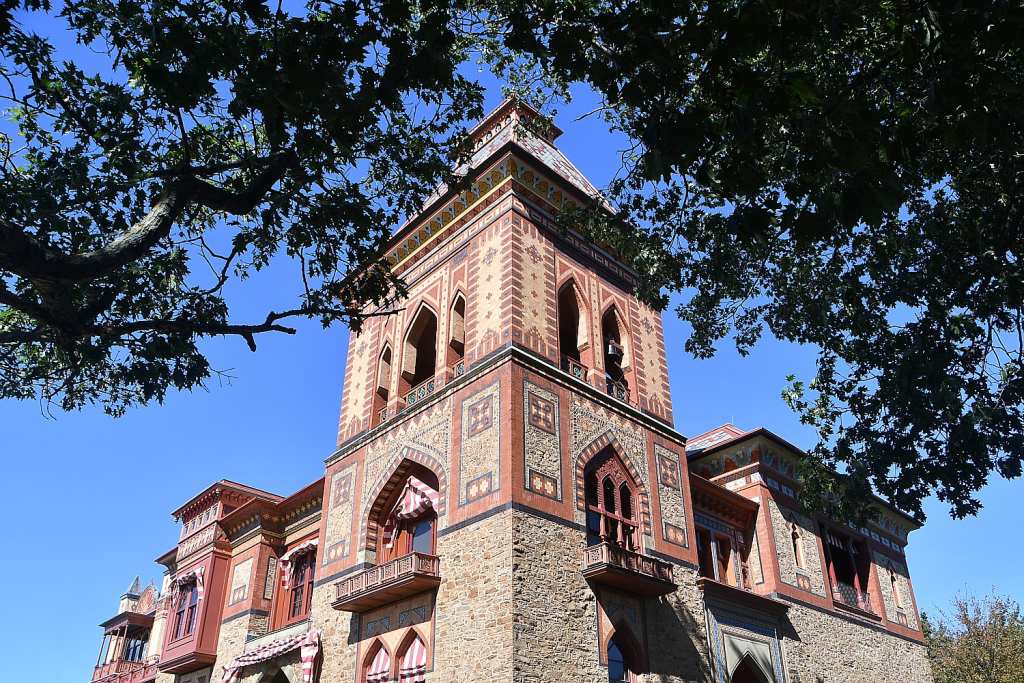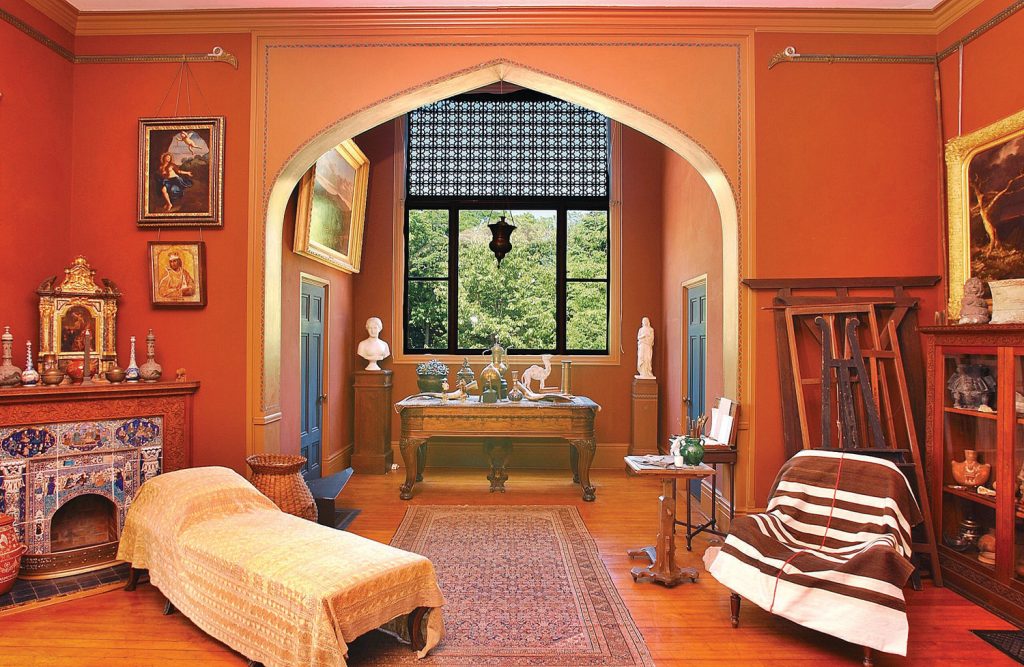Approximately 125 miles north of New York Harbor, up along the Hudson, is a piece of property high above the river. The view of the river valley, from dawn to dusk, is frequently described using only superlatives. Words like spectacular, stunning, awesome, fabulous, magnificent and splendid come to mind. And, on that spot stands a homestead named Olana.

In 1870 a prominent member of the Hudson River School of artists, Frederic Edwin Church started construction of what would be his family’s home for the next ninety-plus years.
Today, as part of the New York State Office of Parks, Recreation, and Historic Preservation, Olana is open to the public year-around. It is truly a great day-out on a sunny-Sunday in winter. The house and the grounds still have much the same appearance as they did in Church’s time there.
The brick, stone and cement exterior is in a Persian style characterized by recessed porches, projecting balconies, towers and an ell that served the artist as his studio and retreat. The dining room, library, and a room they called the Court Hall are all equally fascinating for they are decorated with souvenirs the Churches brought home from their extensive travels in Europe, the middle-East, South America, and Mexico.
Frederick met his wife, Isabel, at a New York City exhibition for his painting Heart of the Andes (1859). In the few years that came after their marriage; Church became America’s highest paid artist. His audience clamored for his work and commissions valued in six-figures were commonplace.
By the late 1880s public interest in romantic realism had diminished, yet Church, who was afflicted with arthritis, continued to paint and his work sold as period pieces to galleries, museums, and private collectors. Today there are nearly one-hundred of his paintings on public view, and estimates suggest three times that many in private collections.

As a member of the Hudson River School, Church worked among a cadre of artists whose work environs extended from the White Mountains of New Hampshire, south through the Adirondacks and Catskills, then south-west to the Delaware Water Gap or south-east to Long Island Sound. More than twenty American painters, including Asher Durand (born in 1796, the oldest) and Thomas Moran (born in 1837, the youngest) considered themselves members of the group. Others such as Robert Duncanson was the first African-American artist to gain notoriety as a landscape artist; Albert Bierstadt, who later in life painted hundreds of canvases showing the Rocky Mountains, the Yosemite valley and the Alaskan Coastal Range; and John Frederick Kensett, whose work from New England and seascapes of coastal New Jersey, Long Island and New England is frequently found on postcards.
Olana is located on Rt. 9G, just five miles south of Hudson, New York. Take NYS I-287 to Exit 21, Catskill. Take Rt. 23 over the Rip Van Winkle Bridge. Bear right on 9G south. Olana is 1 mile on the left.
The Taconic State Parkway works well as a satisfactory alternative route.
Visitor information is available at www.olana.org.
